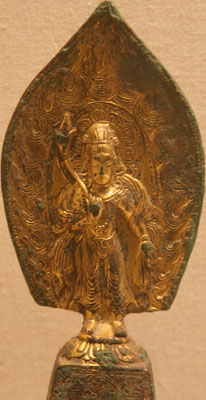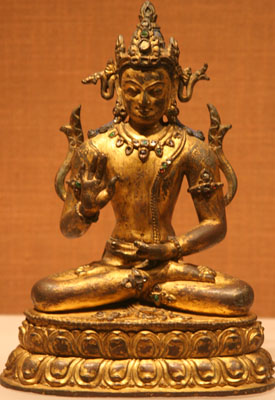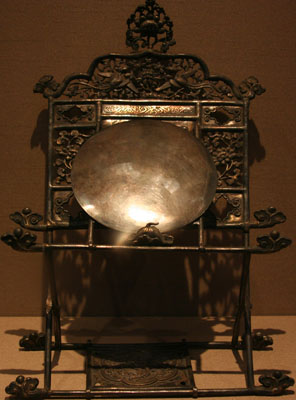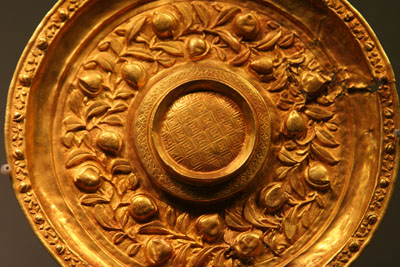Decorative Designs in Chinese Art 中国文物的纹饰
Gold and Silver 金银文物
Click on any word to see more details.
Gold and Silver 金银文物
Gold and silver artifacts in China date back to the Shang Dynasty.

Gold leaf 鎏金 was common with statues of Buddhas and boddhisattvas. The statues above and below are gilt bronze. The nimbus with flame pattern behind the boddhisatva above is especially effective in gold, reflecting the dazzling light that might be emitted from such a boddhisattva. In addition to being a great effect, such a huge nimbus also allows for the status to be created partly or mostly in relief.

The statue of Amoghasiddha Buddha 不动成就佛 above is bronze with gold guilding, partially worn off. There is a lot of symbolism in Buddhist art and also in this statue. One of the easy symbols to recognize is the lotus, a symbol of purity, that Amoghasiddha Buddha is sitting on. The statue is from Tibet but the use of the lotus in Chinese art is the same, both deriving from India.

The statue of Mahavairocana Buddha 大日遍照 above is showing a Bhumyakramana-Mudra 触地印 touching the ground with his right hand symbolizing the Buddha defeating evil and achieving enlightenment.
The mirror stand below, excavated from the Cao 曹 family tomb, is made from pure silver. It is decorated with auspicious designs.

Even though gold and silver artifacts in China date back to the Shang Dynasty, they did not become popular until after the Han dynasty. During the Tang gold and silver items were imported in large quantities from Europe and Southwest Asia. Early Chinese gold artifacts followed the European designs but later on became distinctively Chinese.
Chinese
Pinyin English
